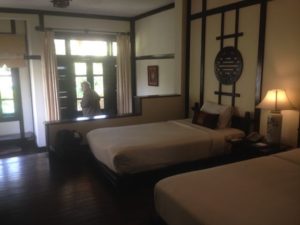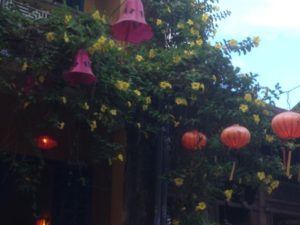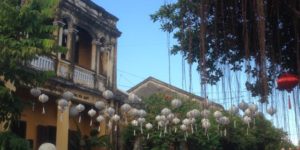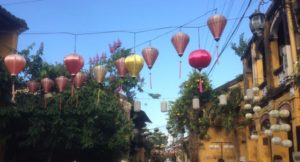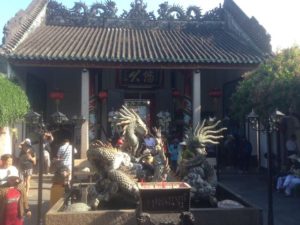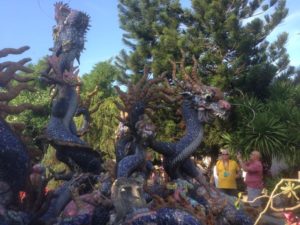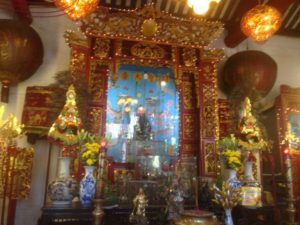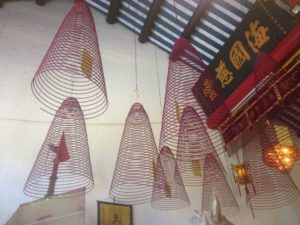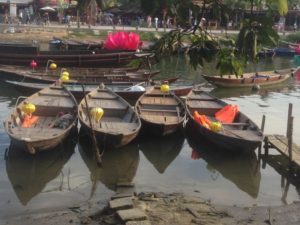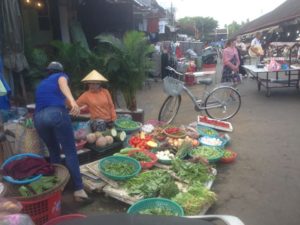In the morning we flew to Da Nang, a port city on the South China Sea. It is the third largest city in Vietnam and is growing rapidly. On our drive from Da Nang to Hoi An, our guide explained that in Vietnam a pagoda is a religious site but a temple is a place to pay respect to spirits and/or heroes.
Our hotel, the Hoi An Trails is a lovely resort only a mile from the beach. It provides a shuttle into town or to the beach, and we can also check out bikes to ride to the beach.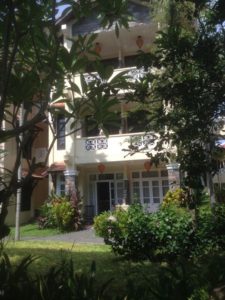
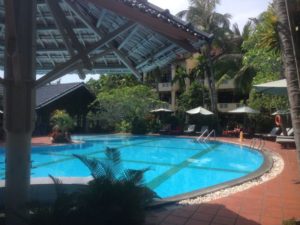 Hoi An is a UNESCO World Heritage site where some women still wear ao dais, Vietnam’s traditional dress. Hoi An was the most important trading port in Southeast Asia in the 15th century. European merchants came for silk and spices and many took refuge from typhoons in the port. Hoi An was influenced by the Chinese, Japanese, and Vietnamese. The Japanese were here from 1500 to 1651 when the emperor required that they all return to Japan.
Hoi An is a UNESCO World Heritage site where some women still wear ao dais, Vietnam’s traditional dress. Hoi An was the most important trading port in Southeast Asia in the 15th century. European merchants came for silk and spices and many took refuge from typhoons in the port. Hoi An was influenced by the Chinese, Japanese, and Vietnamese. The Japanese were here from 1500 to 1651 when the emperor required that they all return to Japan.
The Old Quarter has temples, pagoda, shop houses and private homes. The streets are full of brilliant bougainvillea and hanging lanterns. The streets were crowded with people, even on a Sunday at the beginning of low season, but the town is still charming. It reminds me a bit of St. Augustine.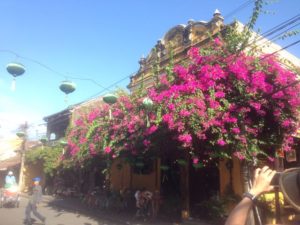
The first site we visited was Quan Trieu Assembly Hall, built in 1885 by Cantonese living in Hoi An as a meeting place and as a place to worship gods, goddesses and heroes. It has elaborate dragon in font and back.
Huge incense coils hang from the ceiling and burn for one month.
 We also the 400-year-old red Japanese Covered Bridge and an Ancient House that has been lived in by the same family for 8 generations. In rainy season, the bottom floor frequently floods and the furniture has to be lifted to the second floor with a winch.
We also the 400-year-old red Japanese Covered Bridge and an Ancient House that has been lived in by the same family for 8 generations. In rainy season, the bottom floor frequently floods and the furniture has to be lifted to the second floor with a winch.
The river separates the new and old town.
 We had a lovely dinner at the Green Chili Restaurant. By the time we were done, the lanterns were lit on the street and a music performance was underway.
We had a lovely dinner at the Green Chili Restaurant. By the time we were done, the lanterns were lit on the street and a music performance was underway.




